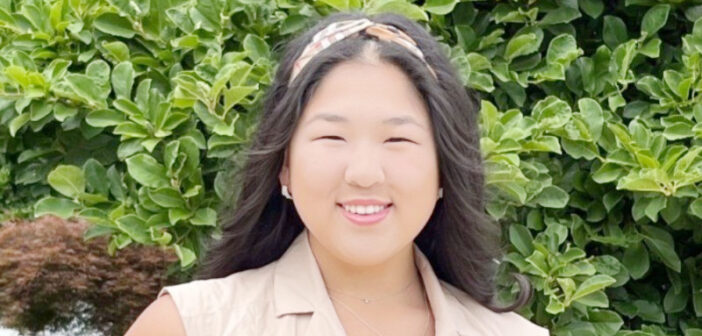Between the early 2000s and the late 2010s, there were very few depictions of Asian characters on film or television — and almost none in children’s media — that weren’t blatant stereotypical depictions or placed in for a laugh as a one-off or minor character.
The “model minority” stereotype characterizes Asian populations as academically and economically high-achieving, and it’s deeply rooted in media.
Growing up with white parents, I wasn’t very connected to my Asian roots, and I never considered myself to be smart or a prodigy.
There was only one on-screen character from that era who truly existed beyond the typical Asian stereotypes. London Tipton, portrayed by Brenda Song in The Suite Life series on Disney Channel, was the only character I could truly relate to.
London was the opposite of a prodigy and different from the other nerdy Asian characters I watched throughout my childhood. She was ditzy, she didn’t care about school and her character development didn’t revolve around her race.
The “model minority” stereotype is harmful, even though it seems positive. Throughout elementary and middle school, there were plenty of times when I answered a question wrong in class, and a peer would remark, “I thought Asians were supposed to be smart.”
Comments like this could be attributed to parents making off-handed remarks, not realizing their children are listening. However, it’s also probable that the creation of stereotypical characters in TV shows and movies that target young people have an impact on how young minds think.
This affected me greatly, as I struggled to grow up as a transracial adoptee.
By 2015, I had graduated from Disney Channel, but I still didn’t see any strong Asian characters in the media I was consuming. Representation wasn’t something that I was actively looking for, though, as I had accepted defeat in being able to find more characters that I could relate to.
I cared more about watching the shows my classmates were binging than finding something that fulfilled what I actually needed to see.
One show I did watch during that time — that I didn’t appreciate as much as I do now — was Glee. A few of the show’s main characters are Asian, and the show included episodes that showed these characters struggling to grapple with their identities and challenging stereotypes.
Shows like The Walking Dead and The 100 also had Asian characters that didn’t feel like a stereotype, but I don’t fully count them as examples of representation since they are both set in a post-apocalyptic world with less cultural influence and more focus on people fighting for survival.
To me, the boom of Asian representation in the media came in 2018, when movies like Crazy Rich Asians and To All the Boys I’ve Loved Before came out.
Crazy Rich Asians was the first majority Asian cast in Hollywood for 25 years. Although I couldn’t relate to the film’s Singaporean culture or lifestyle, I could relate to the main character, Rachel: an Asian American with a loose connection to her Asian roots who tries her hardest to fit in but eventually succeeds by being true to herself and her roots.
This marked the beginning of Asian representation surging in film both in stories surrounding Asian culture. For example, Shang Chi and The Legend of the Ten Rings was a huge step in Hollywood, with Simu Liu portraying the first mainstream Asian superhero.
Although this movie was about his Chinese heritage and how it gave him power, the character Shaun (or Shang Chi) had more layers to his character beyond being a stereotype. This was a portrayal of an Asian character being strong and powerful..
There are also stories that completely ignored the “model minority” stereotype, like Always Be my Maybe. The movie’s two Asian leads played characters that didn’t rely on fitting a stereotype and were written as people, not members of a specific race.
This is the kind of representation that was missing in my childhood, and I’m happy that as I’ve gotten older it has become more prominent. However, this representation still has a ways to go, and I’m hoping it will eventually be more prominent in all forms of media, including children’s programming.
It’s important to show Asian culture, but there are ways to create characters and push narratives that aren’t solely based on stereotypes. It’s important for a character to have depth, regardless of their ethnic background, especially for young and impressionable audiences.
As a writer, noticing the lack of proper Asian representation in film and television has pushed me to write more, creating characters that are like me and the people I know. These include Asian characters that were adopted and characters that didn’t have a typical upbringing.
I hope to one day share these stories so that when I’m older, my children and grandchildren don’t feel the same way as me. Beyond that, I hope anybody else out there who might have had a similar upbringing to myself can feel seen and relate to what they see on their screens.






Comment policy
Comments posted to The Brown and White website are reviewed by a moderator before being approved. Incendiary speech or harassing language, including comments targeted at individuals, may be deemed unacceptable and not published. Spam and other soliciting will also be declined.
The Brown and White also reserves the right to not publish entirely anonymous comments.